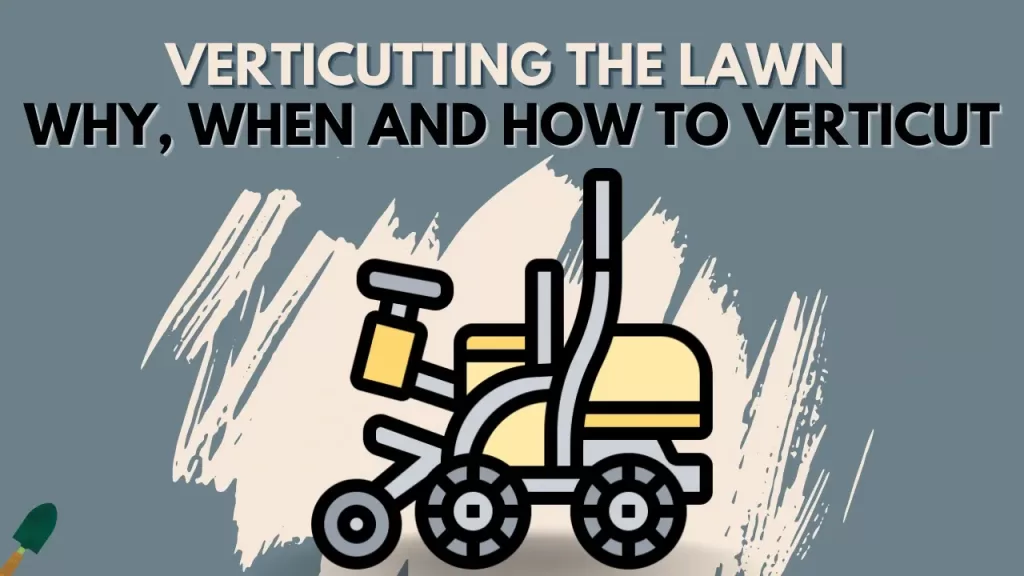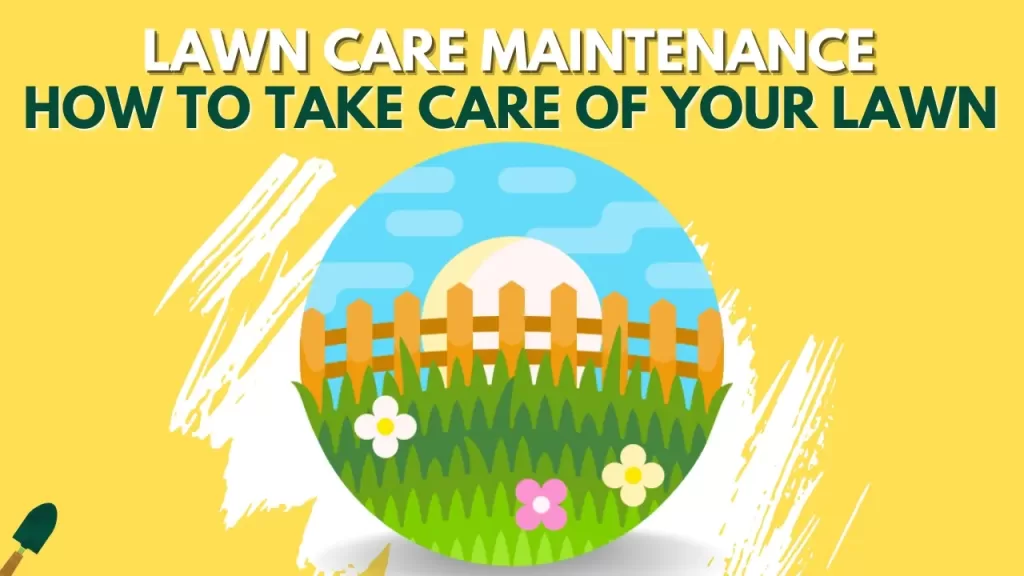So walking on a spongy lawn doesn’t feel as comfortable as walking on a normal lawn, and spongy lawns are also bad for the grass and roots as well because it is caused by thatch building up in the lawn.
Verticutting is the process of removing the thatch from your lawn and making your lawn more healthy. You should do verticutting on your lawn. Verticutting helps the grass to get helpful nutrients and water more easily but makes cuts through the thatch in the soil.
Verticutting the grass is very helpful in old lawns and makes them healthier again and helps the grass to grow more easily.
Let’s talk about Verticutting in detail and how to do it properly by yourself.

What Is Verticutting?
Verticutting as the name suggests is the process of cutting the lawn vertically so that you can remove all the thatch that has built up throughout the year. By Verticutting your lawn you are making way into the soil by which all the essential nutrients like water and air can go into the soil, which can be blocked by the thick layer of soil in the lawn.
You will be wondering what thatch is. Thatch is all the waste material your lawn gets after you mow your lawn like grass clippings and other leaves or through wind it comes to your lawn and sits above the topsoil.
A small layer of thatch is good for your lawn as it helps in retaining moisture and helping the grass, but a thick layer can damage your lawn by blocking the grass from water and air and fertilizer you to get into the soil.
You can remove the thatch with the help of a rake manually, but it is very labour-intensive work and takes a lot of time and effort and manually doing it is not efficient and you can leave some parts of the lawn.
How Does Verticutting Work?
So if you want to verticut your lawn, you will first need a verticutter machine. The verticutter machine has vertical blades 3 to 4 inches long and 1 to 2 inches apart from each other.
The blades of the verticutter can be adjusted in height as well as the distance between them according to how far apart you want the cuts to be in your lawn.
Benefits Of Verticutting
There are a lot of benefits of verticutting your lawn as it helps your lawn to be healthier and promotes growth in the lawn. Let’s discuss all the benefits in detail
- Essential nutrients – Verticutting provides the soil with all the essential nutrients very easily but makes cuts in the top layer of the soil which is built up of thatch.
- Deep roots – by verticutting the lawn you are providing air and water to go deep into the soil, which promotes the grassroots to grow deeper to get these nutrients from the soil.
- Healthy grass – by giving the essential nutrients easily to the soil very easily and promoting the grass to have deep roots in the soil, the lawn becomes healthy and thick. Verticutting is a very helpful process if you want to make your lawn healthy and grow higher.
- Drought and disease resistance – all of the good things which come from verticutting the lawn like a deep root system, healthy thick grass, and nutrient-rich soil will make your lawn resistant to drought and diseases.
By having deep roots your lawn can have water very easily in the heat of the summer season and because of the rich and healthy soil, it can fight diseases and fungus in the lawn.
How To Verticut Your Lawn?
If you are going to verticut the lawn by yourself, then you need to follow a particular process to get the verticut done perfectly, as you can damage your lawn by overdoing the process and make your lawn much worse. So let’s discuss the whole process of verticutting.
- Watering – before you even start the process of verticutting the grass, your lawn needs to be moist and watered two or three days before. If you had rain in the past week then you can do the verticutting process or water the lawn 2-3 days before you are planning to do the process. Watering is important as it will make it easier for the blades to easily go into the thatch layer and make the cuts properly without much effort.
- Mowing – so the first step to verticutting your lawn is to first make the grass shorter. Mow your lawn with the lowest setting to make sure the grass is shorter which will help in the verticutting process and make it easier for you to verticut the lawn properly.
- Cleaning – after you have mowed the lawn. Clean it up lightly with the help of a rake and put all the extra clippings and leaves into the compost bin. The other thing to clean up is to check for all the obstacles in the lawn which can be damaging to the machine-like rocks or metal or obstacles which can create problems for you like water pipes, gas pipes, or irrigation systems which can be damaged by the blades of the machine. mark all the obstacles with the help of white power or flour or you can buy some small flags to put out over the obstacles. This will help you to avoid these places when you are verticutting the lawn and not damaging it.
- Setup – You have prepared your lawn for the process of verticutting, now you need to set up the verticutting machine according to the need and condition of the lawn. First, check how thick the thatch layer is. Your lawn but digging up a small part from the lawn. If it’s under ½ inches then you need to set up the blades to make cuts ½ inches deep into the soil but if the layer is too thick you need to lower the blades more and get them closer to each other to make the more cuts into the soil because a thick layer is very hard to make cuts.
- Verticut – now you have prepared your lawn and set up the verticutting machine, now you need to properly verticut your lawn. Set up the machine in a far corner and start the machine. Most of the verticutting machines go forward by themselves after the start and you just need to give the machine direction. Verticut the lawn slowly and steadily to make sure that the lawn doesn’t get stressed because of the cuts. First, verticut the lawn in one direction throughout the lawn and then turn the lawnmower and start moving vertically from the previous cuts and you will start to see square cuts in your lawn. This is how the verticutting pattern is seen after the cuts.
- Raking – after the cutting you may see some part of the thatch come up to the top of the lawn because of the verticutting. Remove all the thatch that has come up with the help of the rake as you don’t want these to go back into the soil and block the water and air into the soil.
- Fertilize – after you have verticut the lawn, now your lawn is ready to get all the essential nutrients to get into the soil. Fertilize your lawn with a slow-release fertilizer to give it a boost to thrive. There is a reason to fertilize your lawn with a slow-release fertilizer to make sure that you don’t burn your lawn with a fast-release fertilizer which will undo all of the efforts you have put in till now. A slow-release fertilizer will make sure that your lawn is getting all the nutrients throughout the season.
- Watering – after the whole process of preparation, verticutting, and fertilization, the lawn needs proper deep watering to get the fertilizer you have just put in deep into the soil and not just stay laying above the soil. Water your lawn for at least 30 mins if you have warm-season grass and 15 to 20 mins if you have cool-season grass. Watering also depends on which season you are doing the verticutting as your lawn will need less water in the cooler season and more in the summer season. So adjust the watering according to the season.
- Maintaining – last but not least is to maintain your lawn after you have done all these things as beautiful lawns need some effort to be built up and a lot of effort to be maintained. Properly water, mow and fertilize the lawn by making a schedule and sticking to it. Check for the compacted soil and thatch buildup every six months and aerate and dethatch the lawn if you find the need.
What Is The Difference Between Verticutting And Dethatching?
The main difference between verticutting and dethatching is that in verticutting you are just making the cuts into the thatch layer so that everything goes through it into the soil and does not get blocked.
On the other hand in dethatching, you are pulling up the thatch layer by grabbing it to the top of the soil and then removing it from the lawn.
Verticutting Vs Aerating
Verticutting and aerating is a very different processes and both have different benefits to the lawn. When you verticut the lawn you are making the cuts in the top thatch layer of the soil to create pathways for the nutrients and water to go into the soil.
But in the process of aeration, you are removing small amounts of soil from your lawn from different areas to make your soil loosen up and reduce the compaction of the soil. Aeration also helps reduce the blockage of the nutrients and to get them deep into the soil.
Difference Between Verticutting, Dethatching, And Aeration
| Specifications | Verticutting | Dethatching | Aeration |
|---|---|---|---|
| Process | Making cuts to the thatch layer | Removing the thatch layer | Removing a small amount of soil. |
| Time | 2 hours | 6 hours | 4 hours |
| Tools | Verticutting machine | Dethatcher and rake | Rake or aerator |
| Frequency | 3-4 times a year | Once a year | Once a year |
| Cost | 200$ | 500$ | 400$ |
| Effect | Make way for water and nutrients | Increase growth a lot | Loosen the soil |
When Should I Verticut My Lawn?
The best time to verticut your lawn is in fall, as the lawn will grow much faster in the fall than getting into the dormant season. Verticutting the lawn in the fall will help the lawn to become healthier and come out of dormancy very easily and grow much faster in the spring.
What Is The Purpose Of Verticutting?
The main purpose of Verticutting is to remove the thatch buildup which is the layer of dead stems and leaves in the lawn by making vertical cuts into the soil and pulling thatch up and giving the soil underneath some space to get air and water properly and getting all the essential nutrients which were blocked by the thick layer of thatch. The other purpose of verticutting are:
- Improving soil health – By making way for the nutrients and water into the soil, the health of the soil improves drastically and makes your lawn thick and green.
- Improving drainage – verticutting helps the soil to absorb water quickly and this ensures that the water is not pooling on the top of the lawn as it can be a problem and can damage your lawn.
- Promote long-term health – as verticutting improves the soil health it makes your lawn healthy and ensures it can fight drought and diseases in the lawn.
- Create a thick lawn – proper drainage, healthy soil, and long-term growth all make your lawn look thick and green.
How Deep Should You Verticut?
You should Verticut the lawn to ⅓ to ½ inches deep so that you make a proper cut in the thick layer of the thatch so that the water and air can go through the thatch easily into the soil. This will promote the grass to have a deep root system and help it grow very easily.
How Often Should I Verticut?
You should verticut the lawn two to three times a year to give your grass a healthy environment. You can increase the frequency of the verticutting and do it every month if your lawn has a thick layer of thatch that is blocking all the essential nutrients.
How Much Does Verticutting Cost?
The cost of verticutting your lawn by a professional can be around 200 to 400 dollars depending upon the size of the lawn and how much work it needs. But if you are going to verticut the lawn by yourself then you just need a verticutter, which you can take upon rent for around 50 to 100 dollars for a day or two.
Hope you find out the best way to verticut your lawn and make it thick and beautiful.




